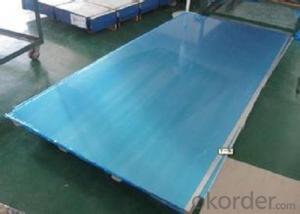Aluminum foil, a staple in most kitchens, has a fascinating story to tell. It’s not just a simple piece of metal, but a versatile material with unique thermal properties that make it an indispensable tool for cooking. Whether you’re a professional chef or an amateur cook, understanding these properties can elevate your culinary skills to new heights.
The Wonders of Aluminum
Aluminum is a lightweight metal with a low melting point, which makes it easy to manipulate and shape into thin sheets. It’s also a good conductor of heat, a property that’s crucial for cooking. When you heat aluminum foil, it distributes the heat evenly across its surface, ensuring that your food cooks uniformly. This is particularly useful for delicate dishes that require precise temperature control.
A Closer Look at Thermal Conductivity
Thermal conductivity is a measure of a material’s ability to transfer heat. Aluminum foil has a high thermal conductivity, which means it can transfer heat quickly and efficiently. This is why it’s often used in cooking processes like baking, roasting, and grilling. The even heat distribution minimizes the risk of burning or overcooking your food.
Reflective Properties: A Chef’s Secret Weapon
Did you know that aluminum foil can also reflect heat? Its reflective surface can be used to your advantage in various cooking techniques. For instance, when roasting meat, placing a piece of foil on the bottom of the pan can help to evenly distribute the heat and cook the meat more consistently. It can also be used to create a steaming effect by trapping moisture, which is perfect for vegetables or fish.
The Art of Wrapping and Double-Layering
Wrapping food in aluminum foil is a common practice, but did you know that the way you wrap it can affect the cooking process? Wrapping food tightly can help to lock in moisture and flavor, while double-layering can provide additional insulation, ensuring that your food cooks evenly and retains its heat. This is especially useful for slow-cooking methods or when you want to keep your food warm for an extended period.
Venting: A Technique to Remember
Sometimes, you might want to let some steam escape while cooking. This is where venting comes in. By making small punctures or slits in the foil, you can control the amount of steam that escapes, which can help to prevent your food from becoming soggy. Venting is a subtle but important technique that can make a big difference in the texture and taste of your dishes.
Reusability and Sustainability
Aluminum foil is not just a one-time-use item. It can be reused multiple times, which is great for both your wallet and the environment. After using it, simply wash it with warm soapy water, let it dry, and it’s ready for another round of cooking. This reusability makes it a sustainable choice for those who are conscious about their environmental impact.
Safety First: A Word of Caution
While aluminum foil is a fantastic cooking aid, it’s important to use it safely. Avoid using it with acidic or highly reactive foods, as they can cause the foil to corrode or release aluminum into the food. Also, make sure to use it in well-ventilated areas and avoid direct contact with open flames to prevent any potential health risks.
Embracing the Aluminum Foil in Your Kitchen
Now that you know more about the thermal properties of aluminum foil, it’s time to embrace it in your kitchen. Experiment with different techniques, from wrapping and double-layering to venting and using its reflective properties. With a little creativity and knowledge, you can transform your cooking experience and create delicious, evenly cooked meals that will impress your family and friends.
So, the next time you reach for that roll of aluminum foil, remember that it’s not just a simple kitchen tool, but a powerful ally in your culinary adventures. With its unique thermal properties, aluminum foil can help you achieve perfect cooking results every time.

